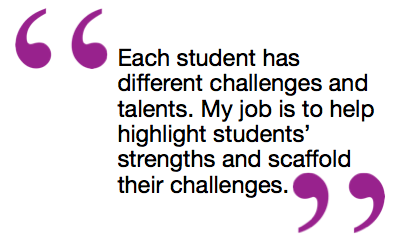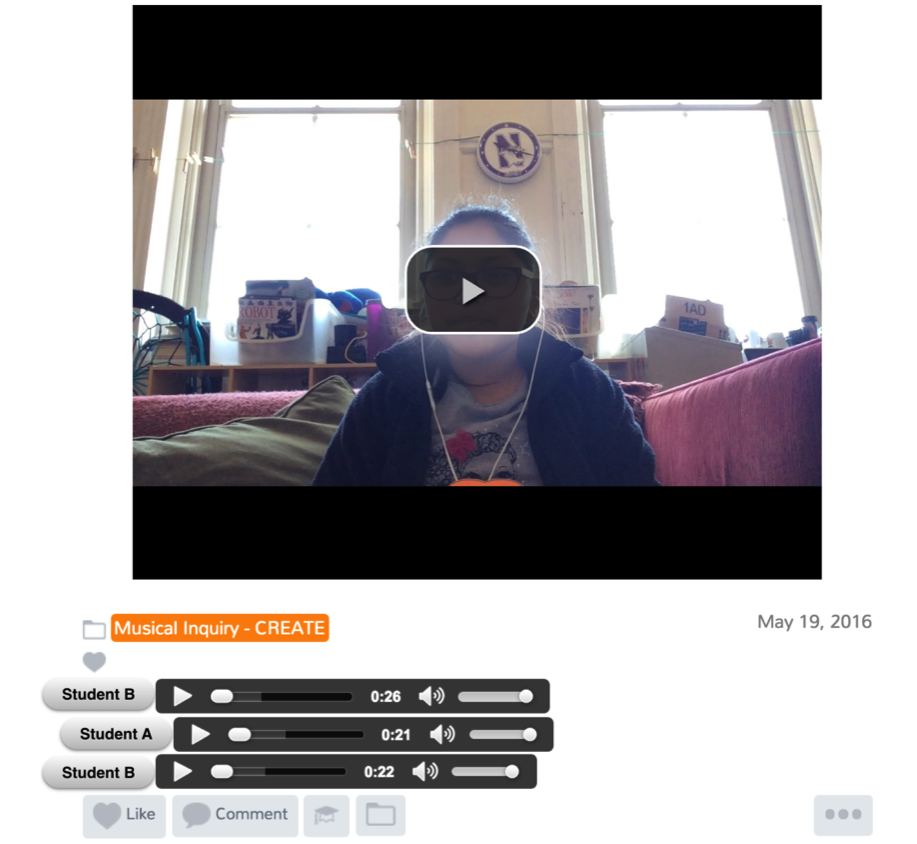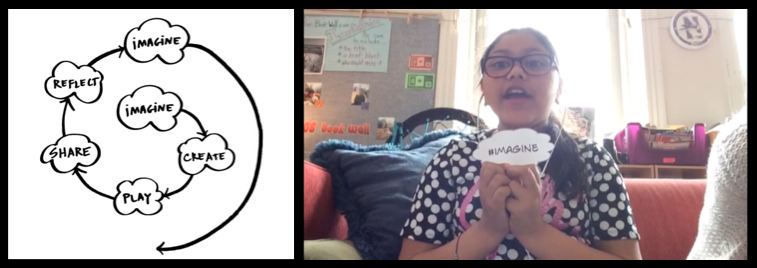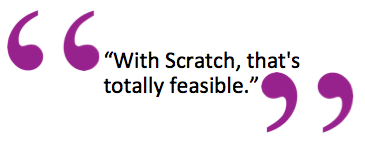Dedicating Time for Reflection
Nick Giacobbe, a Special Education teacher working with students in grades 4 and 5, gives us a look inside his classroom at Augustus H. Burley School, in Chicago.
Classroom Culture: Building in Time for Reflection
 All of Nick’s students have exceptionalities but–as with any group of students–variability is the norm, not the exception. “Each student has different challenges and talents. My job is to help highlight students’ strengths and scaffold their challenges,” says Nick. To help students reach their goals, Nick has built metacognitive practices into the culture of his classroom.
All of Nick’s students have exceptionalities but–as with any group of students–variability is the norm, not the exception. “Each student has different challenges and talents. My job is to help highlight students’ strengths and scaffold their challenges,” says Nick. To help students reach their goals, Nick has built metacognitive practices into the culture of his classroom.
One specific protocol that has become second nature to his students is pausing to reflect, using the Seesaw app. In Nick’s words, “Seesaw is an online portfolio where students can share a video or picture and peers can give feedback with typed text or an audio note. I’ve found that students learn more when they can reflect through conversation about their design choices; Seesaw is a great tool for this.”
With a simple prompt from Nick, students pick up their ipads and enthusiastically record a ‘think aloud’ about what they just did. When they’re done, the short recordings live on in each student’s portfolio, as active artifacts. Much like a classroom where a discussion protocol has become routinized, Nick's students comment on one another's reflections with audio or video recordings, prolonging and deepening the reflective process. Nick also provides students with feedback through the app.

Screenshot of a Seesaw reflection video and feedback from peers.
Scratch in Action: A Symphony of Scratch
This spring, Nick’s students (all of whom are in the school orchestra or choir) had the opportunity to perform at Symphony Center, in downtown Chicago. Students were abuzz with questions like, “Why are instruments made the way they are?” and “Where did instruments come from?” So Nick, who has a penchant for Makey Makey and Scratch, proposed a hands-on exploration of these interests: each student could create their own instrument and make it playable via code and conductive tape.
Time was limited and structure was key so–as with many projects in his classroom–Nick broke the process down into the five phases of Mitch Resnick’s Creative Learning Spiral. Nick also structured the reflection process to mirror the spiral, asking students pause and reflect on each phase of the creative process.

(Left) Mitch Resnick's Creative Learning Spiral (Right) A student records a Seesaw reflection, holding a little paper cloud as a visual indicator of the #imagine phase of the Creative Learning Spiral.

Imagine (Day 1)
Students imagined what they would like to make, with no limits. Examples included, "a whimsical flute", "a full size double bass like I’ve seen at Symphony Center", and "a drum that makes Star Wars sounds". Nick’s response to this divergent thinking: “With Scratch, that's totally feasible.”
Create (Days 2 and 3)
Students drew plans for their “imagined” instruments, and got to work making them using cardboard, tape and conductive candy. They also constructed their code, translating the sounds they envisioned for their instruments into Scratch, through remixing, recording, and composing.
A student drawing of a double bass, from the ‘Create’ phase of the project.
Play, Share, and Reflect (Day 4)
The students' work culminated in a musical science fair of sorts. They started in small critique groups, sharing their work and letting their classmates play with and react to their instruments. During this time, Nick circulated the room, consulting with students as needed.
Finally, students performed for the whole class, sharing their music and their code, and inviting everyone to share questions and ideas for possible next steps.
One student had even written an original composition, with invented notation, which she used to guide her performance.
Sheet music, created by a student for her whimsical flute performance.
Take Away from Nick:
“I was blown away by what my students were able to create through this project. I gave them the room to explore and they were able to exceed my expectations. It can be nerve wracking giving students that kind of freedom but it's well worth it.”

